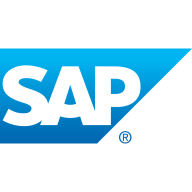

Informatica PowerExchange and SAP Data Services are leading competitors in the data integration market. PowerExchange seems to have the upper hand with its flexibility in data transformation processes.
Features: Informatica PowerExchange offers standout features such as native real-time capabilities, pushdown optimization, and Change Data Capture (CDC). Its ability to handle both structured and unstructured data types, combined with seamless integration with external sources, rounds out its robust offerings. SAP Data Services excels in its ETL capabilities, data quality features, and integration with SAP systems. The SQL-based logic and ease of use in integrating both SAP and non-SAP systems make it a valuable tool for many organizations.
Room for Improvement: Informatica PowerExchange could enhance pricing transparency, support for additional data types, and complexity in configurations. It also needs better integration with cloud platforms. SAP Data Services can improve its integration with other products, enhance user-friendliness, and boost its connectivity and performance diagnostics for better user experiences.
Ease of Deployment and Customer Service: Informatica PowerExchange supports a range of deployment environments, including on-premises and hybrid cloud solutions, providing flexibility. However, response times in customer service are a noted issue. SAP Data Services mainly operates in on-premises setups with limited hybrid cloud support, and users report average experiences with customer service and ticket resolution times.
Pricing and ROI: Informatica PowerExchange is generally viewed as expensive with a complex pricing model, yet it offers a significant ROI due to streamlined data processes. SAP Data Services also comes at a high cost, particularly affecting smaller businesses, but its usage-based pricing model can attract organizations with varying data processing needs. Pricing structures of both require careful consideration for their long-term data management value.
It is considered cost-efficient because it leads to the re-utilization of channels and platforms, which saves time and money.
SAP is indeed good at all this now, with so many components such as SAP Signavio, SAP EINS, SAP Work Zone, SAP ALM, Cloud ALM, SAP public cloud, SAP private cloud, and BTP, all of which are essential to meet the latest cutting-edge technologies.
Their support aligns with what I have experienced with Informatica data quality teams, and it is quite effective.
Informatica's technical support team is very supportive and provides help whenever required.
The support was good enough, and they were able to resolve all the issues I raised in the past.
If you keep a high priority issue, such as a production impact, they certainly come and address it in no time.
Unlike level one where they basically search for the notes and provide responses, level two and level three are much better.
If I were to rate it from one to 10, I would say it has a nine to 10 for scalability.
Technical errors sometimes occur, such as network breakages at the source level, which breaks connectivity.
The addition of data quality dashboards or measures would also help in profiling data to assess its health before sharing or moving it.
One area that could be improved is performance, as PowerExchange sometimes has less performance compared to native connectors when dealing with a huge volume of data.
Now, they are coming up with many pricing options, which is tricky; they offer one thing for free, but charge for nine others.
The documentation is not up to the mark.
The pricing and cost depend heavily on SAP's licensing structure, especially if using SAP integration services.
Informatica PowerExchange is considered cost-efficient due to reduced number of APIs needed.
It also reduces the number of APIs needed for new integrations by offering a unified exchange platform.
The primary advantage of Informatica PowerExchange is being able to extract data from source systems that Informatica does not natively support.
PowerExchange is one of the best software solutions to build integrations with non-Oracle or standard database services, especially for SAP and Hana products.
SAP is indeed good at all this now, with so many components such as SAP Signavio, SAP EINS, SAP Work Zone, SAP ALM, Cloud ALM, SAP public cloud, SAP private cloud, and BTP, all of which are essential to meet the latest cutting-edge technologies.
SAP Data Services is mainly used for extraction of data, and it works with all databases.
| Product | Market Share (%) |
|---|---|
| SAP Data Services | 1.8% |
| Informatica PowerExchange | 1.1% |
| Other | 97.1% |


| Company Size | Count |
|---|---|
| Small Business | 8 |
| Midsize Enterprise | 3 |
| Large Enterprise | 12 |
| Company Size | Count |
|---|---|
| Small Business | 12 |
| Midsize Enterprise | 5 |
| Large Enterprise | 36 |
Informatica PowerExchange Connectors provides high performance, out-of-the-box connectivity without having to develop custom data access programs.
SAP Data Services is a top-ranking data integration and data quality tool. This is a product that aims to provide its users with effective access to their data in order to transform it and connect it to various business processes. SAP Data Services offers companies detailed data insights which improve decision-making and make company operations more effective.
Organizations can increase the value of their structured and unstructured data with the functionalities of this product regarding data integration, quality, and cleansing. Through various components such as:
the product transforms data into a ready-to-use resource for business insights.
Some of the key components of SAP Data Services include:
Through these components, the product allows its clients to access and integrate data sources and targets with native connectors. Users can derive meaning from unstructured text data, match data to reduce duplicates, and see the impact of data quality issues. The tool also offers the option to enable parallel processing, bulk data loading, and grid computing for high-volume data loads.
SAP Data Services Features
The solution has different features for data integration, data quality, data profiling, and processing of text data. Using these features, clients can manage their company's data easily and achieve excellent results by optimizing it. Some of the product’s features include:
SAP Data Services Benefits
This solution offers various benefits to its clients regarding the efficient operation of their data. The key benefits of SAP Data Services include:
Reviews from Real Users
According to Michael Lutz, senior data warehouse developer at Fox Chase Cancer Center, SAP Data Services is a powerful tool that does a lot.
An associate consultant at a consultancy says the tool is easy to use, simple to implement, and offers very good mapping capabilities.
We monitor all Data Integration reviews to prevent fraudulent reviews and keep review quality high. We do not post reviews by company employees or direct competitors. We validate each review for authenticity via cross-reference with LinkedIn, and personal follow-up with the reviewer when necessary.